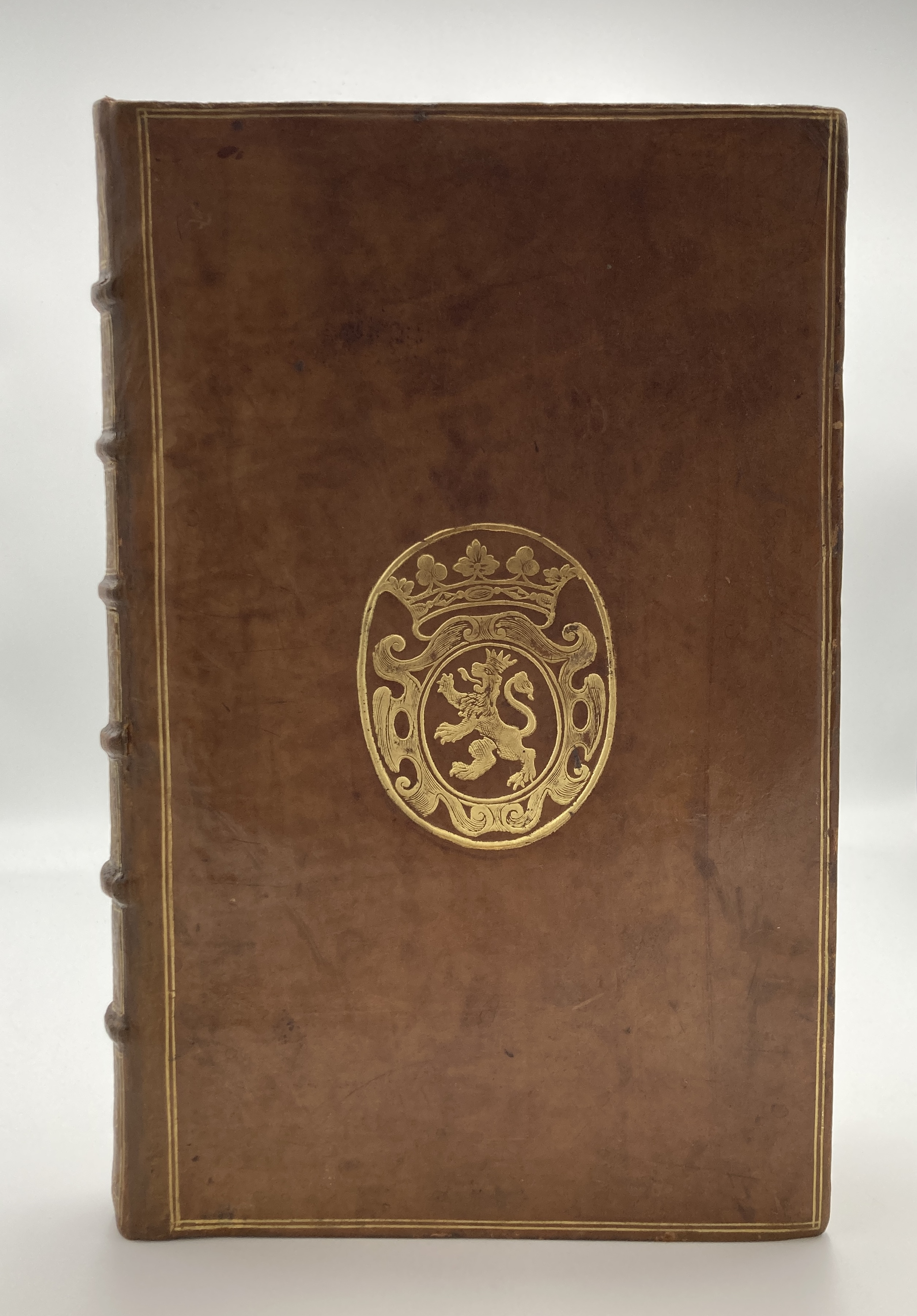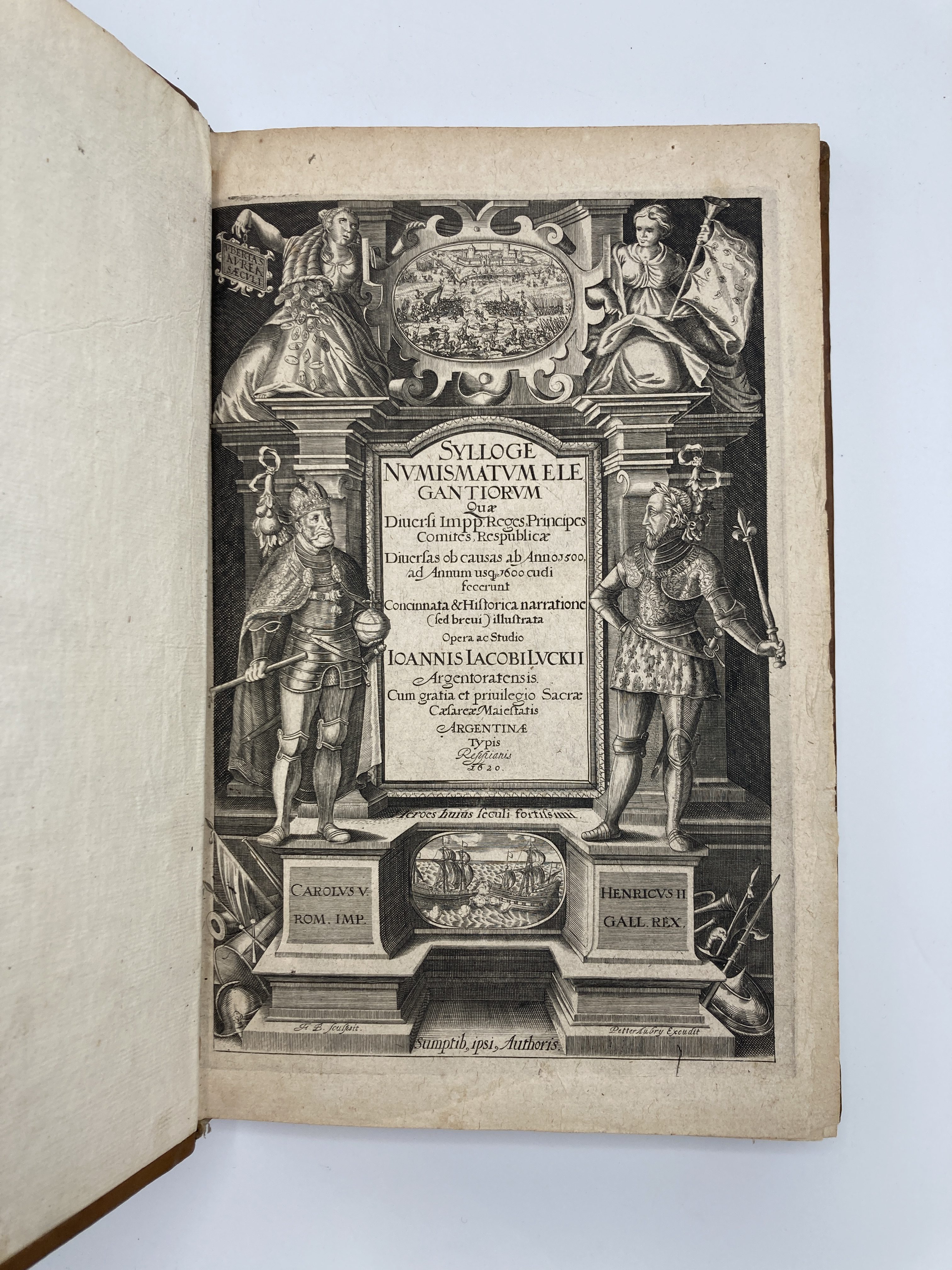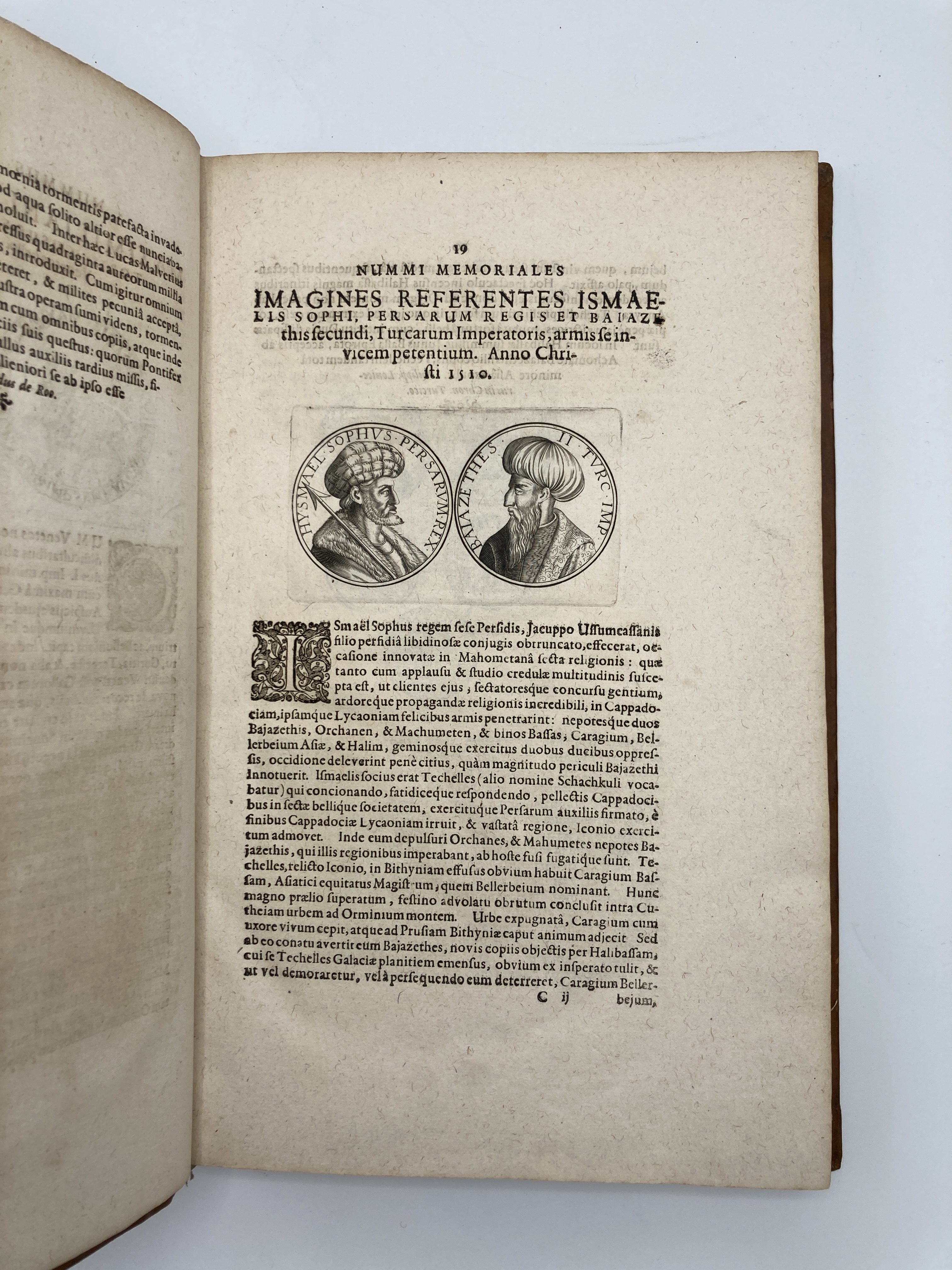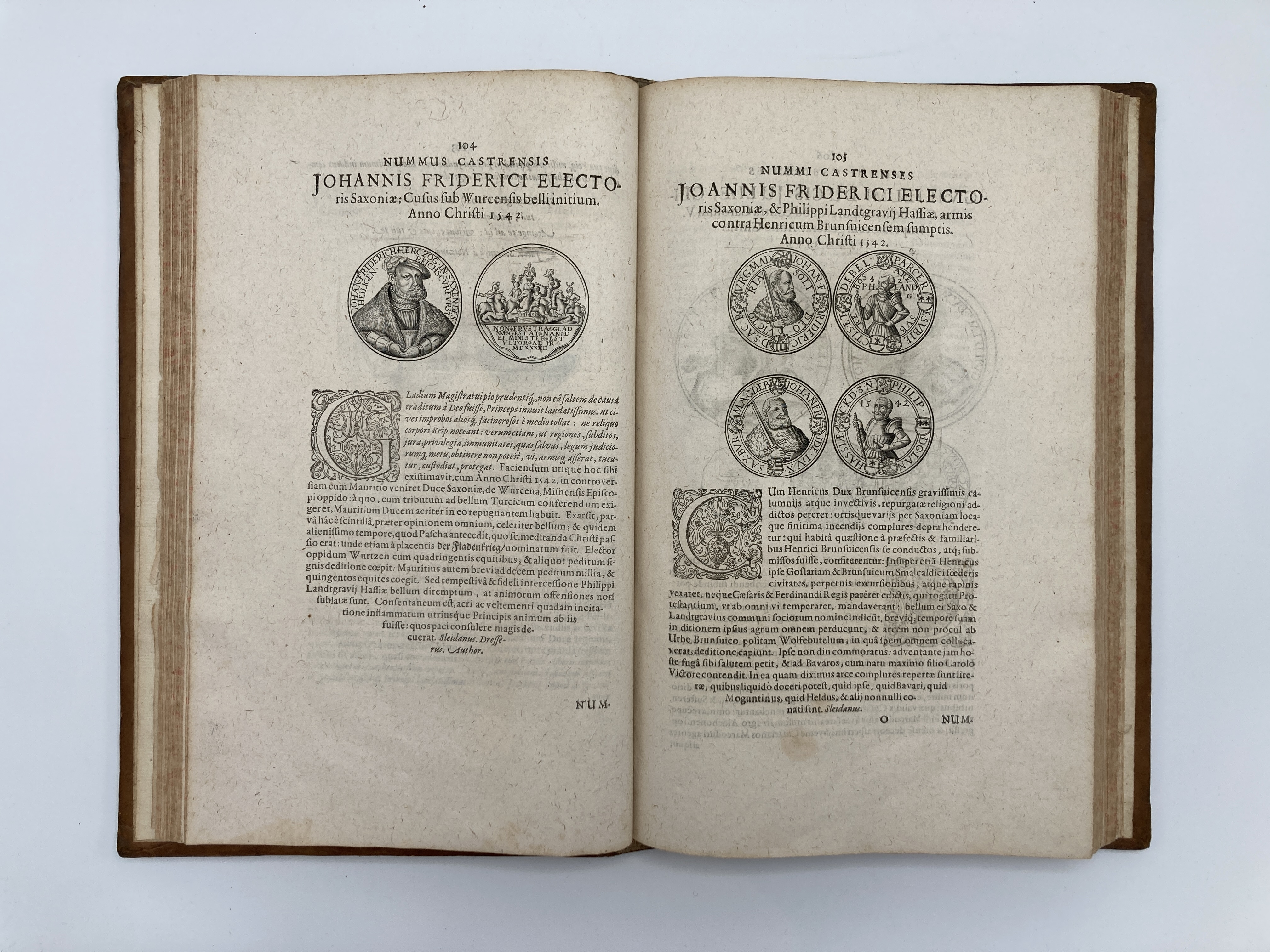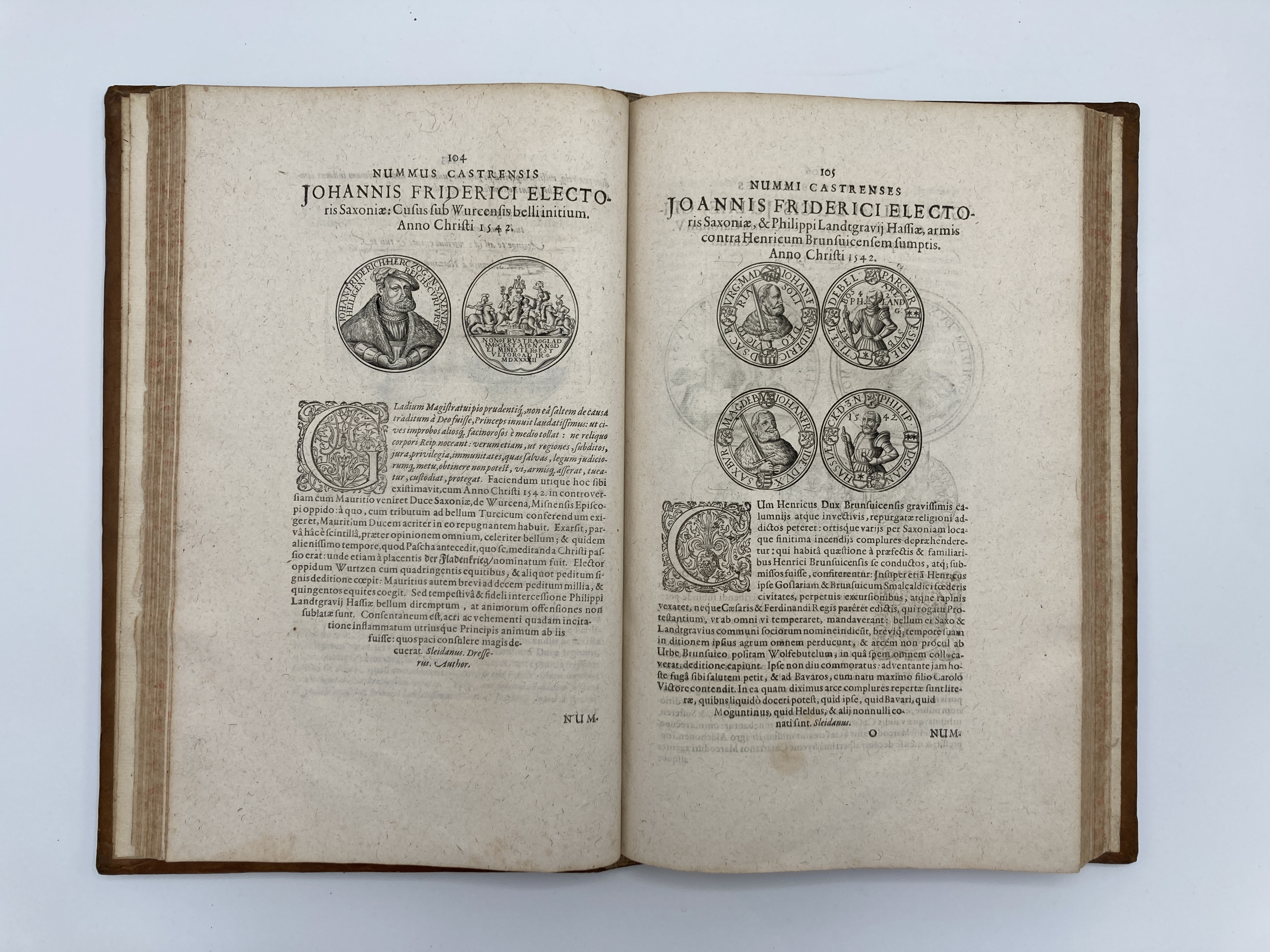LUCK, Johann Jacob.
HISTORY TOLD THROUGH COINS
Sylloge Numismatum Elegantiorum.
Strasbourg, Johann Repp, 1620£9,500.00
FIRST EDITION. FIRST STATE. Folio, pp. (viii), 383, (v). Roman and italic letter, printer’s woodcut device to title-page, woodcut initials, decorative printer’s ornaments, very numerous engravings of Renaissance coins and medals throughout. Architectural engraved titlepage depicting Charles V, Holy Roman Emperor, and Henry II of France, allegorical female figures (Fame and Plenty), two vignettes depicting a siege and naval battle, engraved arms of dedicatee Eberhard von Rappoltstein (1570-1637) preceding text, drawn by Frédéric Brentel and engraved by Pierre Aubry I. A very good copy in full C17 calf gilt, both covers ruled with double fillet border, arms of Nicholas-Joseph Foucault to both covers, spine in seven compartments, title in gilt lettering to second compartment down, floriation and double fillet borders gilt to six other compartments. Armorial bookplate of Nicholas-Joseph Foucault (1643 – 1720), modern bookplate of Alain Moatti, Foucalt’s ms. acquisition note on front end-paper (’emptus 6 l[ivres] 22 Mai 1684′). Few tiny wormholes to rear pastedown and last few gatherings, old repair to lower margin of 2G1, worm-trail to lower margin of gatherings 2O, 2Q, repaired in first two.
An excellent copy of the first edition of this beautifully illustrated work on numismatics, with the arms of Nicolas Joseph Foucault (1643-1721), one of his age’s most celebrated antiquarians.
Johann Jacob Luck (1574-1653) was a native of Strasbourg who, after completing his legal studies, served as historiographer and genealogist for the Rappoltstein noble family between 1608 and 1623. A passionate numismatist, he owned a collection of several thousand medals and coins. The present treatise is groundbreaking in its use of coins, medals and emblems to illustrate historical events. Beginning in 1500 with Louis XII of France and ending in 1599 with Rudolf II, Holy Roman Emperor, Luck’s historical treatise uses the portraits and scenes depicted on the coins and medals that it reproduces (in chronological order) as starting-points for biographical discussions of the century’s most important rulers and for historical treatments of its most memorable battles and political events. This fascinating work constitutes a history of sixteenth-century Europe told through coins. “In Luck’s text, coins are the driving evidentiary force for a history of Europe in the years 1500 to 1600, serving not as mere material footnotes but as a narrative itinerary for epochal events.” (Stielau)
While many of the coins reproduced in this work were in Luck’s collection, others are reproduced from the earlier work Symbola divina et humana pontificium, imperatorum, regum by Jacob Typot (1540-1601). The present copy is in the first state (USTC 2137262) without the added poems in praise of the author, and with the preface in its original setting.
Nicolas-Joseph Foucault (1643-1721) was a royal administrator in the reign of Louis XIV and a renowned antiquarian and bibliophile. He was educated at a Jesuit college and graduated in canon and civil law at Orléans in 1665. From 1674 to 1706, he held administrative posts successively in Montauban, Pau, Poitiers and Caen; most notably he was appointed master of requests (Maître des requêtes) by the king in 1674 and held this position for twenty years. Throughout this time, Foucault displayed an interest in art and archeology and assembled a fine collection of rare books and manuscripts, antique figures, medals and coins, most of which had been discovered in France. “Sa collection de manuscrits […] comprenait, entre autres, cent vingt-trois livres d’heures, dont celles de René d’Anjou, des bibles, des cartulaires et un riche ensemble de pièces sur l’histoire, le droit public et l’administration de la France, réunies en 180 volumes in-folio. Ses séries numismatiques n’étaient pas moins célèbres. Lorsqu’il décida de s’en séparer, en 1708, sa collection comptait autour de quinze mille monnaies, toutes antiques, soit autant, par exemple, que celle de Christine de Suède.” (Avisseau-Broustet) In his old age, however, Foucault was forced to sell off his collections and his library was in part dispersed before his death (it appeared on the market from 1715 onwards).
USTC 2137262. VD17 3:653580D. STC Ger. 17th century, L1171. Brunet III, 1217 : “recueil devenu assez rare”. Cicognara 2910: “Questa è una delle opere ove siano con più fedeltà […] in gran copia raffigurate medaglie di bella esecuzione prodotte nell’aureo secolo”. Avisseau-Broustet, Mathilde, “La Collection de Nicolas-Joseph Foucault (1643-1721) et de Nicolas Mahudel (1673-1747)”, INHA (2009). Stielau, Allison, \\\\\\\"Sixteenth-Century Notklippen as Objects of Warfare? Realia, Representation, Narration\\\\\\\", in Kaske, Romana and Saviello, Julia. Objekte des Krieges: Präsenz & Repräsentation (Berlin, Boston: De Gruyter, 2019)In stock


